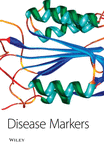Antibodies against 4-Hydroxy-2-nonenal Modified Epitopes Recognized Chromatin and Its Oxidized Forms: Role of Chromatin, Oxidized Forms of Chromatin and 4-Hydroxy-2-nonenal Modified Epitopes in the Etiopathogenesis of SLE
Abstract
Objectives: This study was undertaken to investigate the role of lipid oxidative-by-product 4-hydroxy-2-nonenal (HNE)-modified human serum albumin (HSA), chromatin, reactive oxygen species (ROS)-modified chromatin and nitric oxide (NO)-modified chromatin in systemic lupus erythematosus (SLE).
Methods: HSA was modified by HNE. Immunogenicity of modified HSA was probed by inducing polyclonal antibodies in rabbits. Chromatin was isolated from goat liver and modified by ROS or NO. Immunocross-reactions of Protein-A purified anti-HNE-HSA-IgG with chromatin, ROS-chromatin and NO-chromatin were determined. Autoantibodies from 74 SLE patients were screened. HSA was isolated from SLE patients (SLE-HSA) and immunocross-reactions of isolated SLE-HSA with HNE-specific antibodies were investigated.
Results: HNE-HSA was found to be highly immunogenic in rabbits. The notable feature of anti-HNE-HSA-IgG showed cross-reactions with chromatin, ROS-chromatin and NO-chromatin (p < 0.01). High degree of specific binding to HNEHSA, chromatin, ROS-chromatin or NO-chromatin was observed with antibodies from 55% of SLE patients. SLE anti-native/oxidized chromatin antibodies showed specificity towards HNE-HSA. Furthermore, SLE-HSAshowed binding with HNE-specific antibodies.
Conclusions: This is the first study to demonstrate that chromatin and its oxidized forms have been recognized by antibodies against HNE modified epitopes. Our results provide an important insight into the immunological basis of the reported HNE-modified epitopes in SLE.




